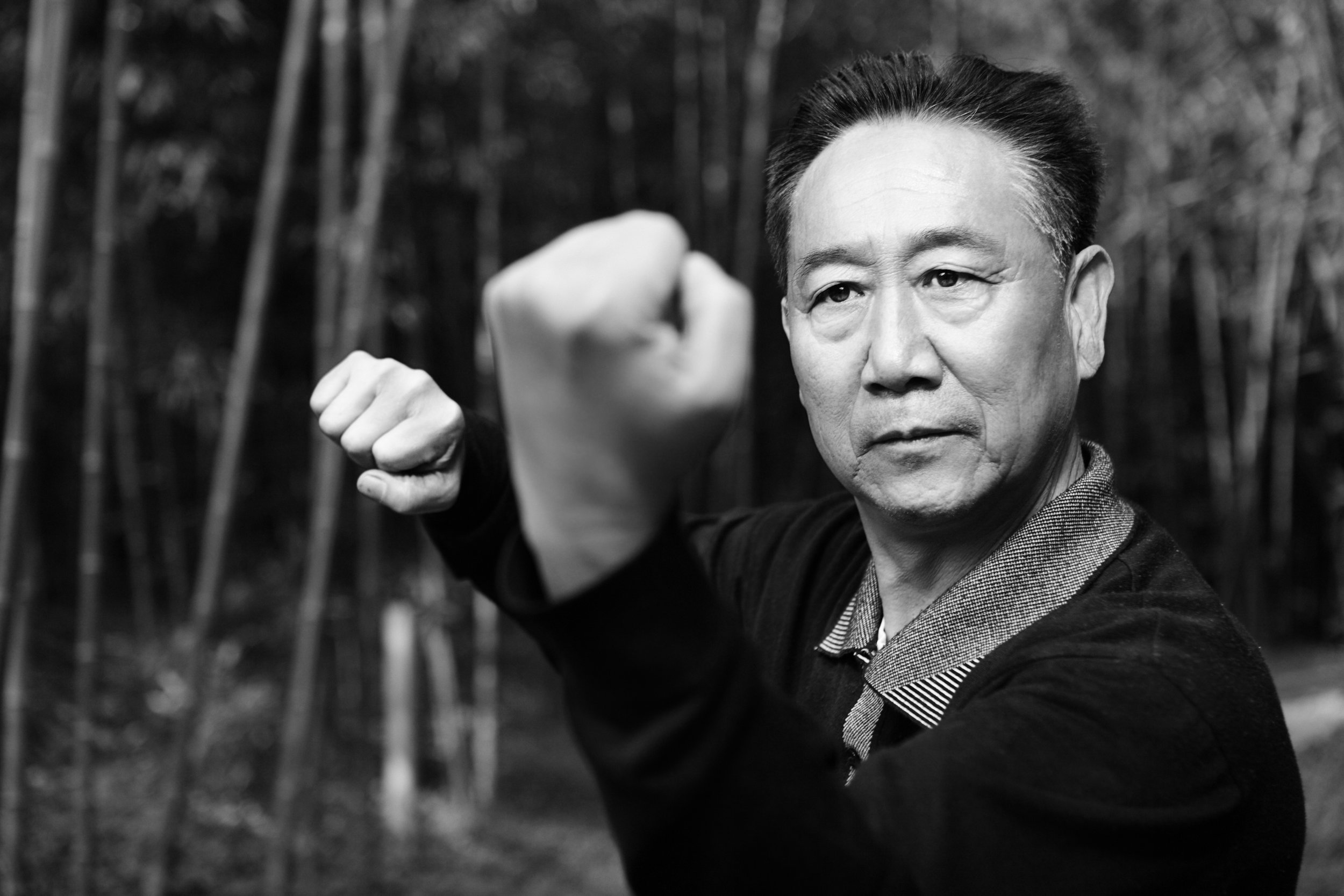
Master Di Guoyong
Master Di Guoyong is a renowned teacher of Hebei Xingyi Quan and Liang style Bagua Zhang.
Di Guoyong is an internationally renowned practitioner and teacher of both Hebei Xíngyì Quán as well as Bāguà Zhăng. He was born in Li County of Hebei province in September 1948. In 1960 his family relocated to Beijing where he has lived ever since. At the age of 13, Di Guoyong started studying Chinese martial arts with his teacher, Zhao Zhong, who was teaching in Beijing’s Hai Dian district. Although he began training to strengthen his body, Di Guoyong became extremely fond of the martial arts and that set the path for the rest of his life. He trained with Zhao Zhong throughout his school years and after he began to work, he continued his daily training with him every morning before work.
Grandmaster Zhao Zhong
Grandmaster Li Zming
Grandmaster Wu Binlou
Initially, Zhao Zhong taught Di Guoyong traditional Shaolin boxing and later on began teaching him Xíngyì Quán. Di Guoyong trained daily and was so obsessed with martial arts that he would often go to other public spaces to watch people practice their various arts. On one such occasion he saw Wu Binlou practicing the art of Chuō Jiăo Fān Zi Quán. Di Guoyong was interested in learning the style. When Di Guoyong told his teacher Zhao Zhong about this, not only was he pleased and supportive, but he personally went with Di Guoyong to see his old friend, Wu Binlou. This type of open attitude was quite rare within the older generation teachers of the Chinese martial arts. Di Guoyong became a disciple of Wu Binlou’s and began his study of Chuō Jiăo Fān Zi Quán in addition to his study and practice of Xíngyì Quán. In 1975, Di Guoyong met the famed 3rd generation Bāguà Zhăng master Li Ziming. Di Guoyong began studying the art with him and was accepted as one of Li Ziming’s eight original disciples. Di Guoyong studied the art of Bāguà Zhăng deeply under the careful instruction of Li Ziming. While Xíngyì Quán was and still is his primary and core art, Di Guoyong was passionate about Bāguà Zhăng and he became highly proficient with all aspects of its practice, truly living up to the old adage: “With Xingyi hands and Bagua footwork, one need not fear even demons”.
Di Guoyong was inspired by the work his master Li Ziming had done with the “Beijing Bagua Zhang Research Association” and he desired that something similar be done for Xíngyì Quán. To that end, he initiated the preparatory work for the establishment of the “Beijing Xingyi Quan Research Association” in 1982, and in 1983 the organization was formally established. Di Guoyong served as its secretary-general for its first term; its vice-president and secretary-general for its second term; its vice-president for its third and fourth terms; and as its president for its fifth and sixth terms. Throughout his involvement in the “Beijing Xingyi Quan Research Association” Di Guoyong did much for the promotion, research and preservation of Xíngyì Quán. Additionally in 1983, a martial arts club was established by the students of Peking University, who were interested in learning traditional Chinese martial arts as opposed to the standardized official version of Wushu. The group of teachers that taught there were all folk traditional practitioners drawn from official lineages. Di Guoyong was in charge of teaching Xíngyì Quán there for many years.
Di Guoyong has practiced, promoted and taught his beloved art of Xíngyì Quán as well as Bāguà Zhăng ceaselessly since he began learning the arts. Being an avid martial artist, he not only practiced extremely hard, but has also spent his life researching the arts. He oftentimes had to overcome extreme adversity in his pursuit of these arts, including training through the Cultural Revolution in China. His dedication never faulted. He has passionately taught the art for most of his life as well, teaching both domestically and internationally.
He has written numerous works on the art, most notably his series of books in Xíngyì Quán titled Xíng Yì Quán Xiè Jīng Jiě were published domestically in China, and also in Taiwan and subsequently translated into English by Andrea Falk and published internationally as “Di Guoyong on Xingyi Quan” by TGL Books. These books have been extremely well received by both the Chinese and international markets and are regarded as some of the most authoritative works on the art to date. Additionally, a production company produced a series of ten instructional DVDs on Xíngyì Quán featuring Di Guoyong.
Di Guoyong is a meticulous and demanding teacher. He has produced numerous skilled practitioners of the arts he teaches. Although he is currently in his seventies, he is still actively teaching and training.
The above is but a brief overview of the history of Di Guoyong and does not clearly illustrate the great knowledge and depth of skill he has in the arts; nor does it do justice to the open, giving and wonderful character that he has as both a teacher and a human being. I hope to be able to one day write a memoir recounting my experiences over the decade plus years I have been lucky to spend close to him learning not only these arts but also learning how to be a better human being.
(Excerpt taken from the book “Dragon Body, Tiger Spirit” by Byron Jacobs)









